trong Đèn LED dải Các dự án, việc lựa chọn một cấu hình nhôm không chỉ ảnh hưởng đến sự thuận tiện khi lắp đặt mà còn cả hiệu suất nhiệt, chất lượng ánh sáng và tuổi thọ. Ví dụ, nhôm 6063-T5 - thường được sử dụng trong các cấu hình LED - có độ dẫn nhiệt khoảng 201 W / (m · K), cao hơn 1.000 × so với hầu hết các loại nhựa, cho phép nó nhanh chóng truyền nhiệt lượng tỏa ra 8-10 W trên mỗi mét bằng dải LED công suất cao (15 W / m). Nếu không có sự tiêu tán thích hợp, nhiệt này có thể đẩy nhiệt độ PCB lên trên 80 ° C, dẫn đến mất giá, chuyển màu và giảm tuổi thọ lên đến 50%.
Lựa chọn bộ khuếch tán đóng một vai trò quan trọng không kém: một bộ khuếch tán kém phù hợp có thể gây chói, ánh sáng không đồng đều hoặc đầu ra giảm, làm suy yếu ý định thiết kế.
Để biết phân tích đầy đủ về các danh mục hồ sơ, đặc điểm hiệu suất và trường hợp sử dụng, hãy xem Hướng dẫn cuối cùng về cấu hình nhôm cho ánh sáng dải LED. Trong hướng dẫn này, chúng tôi tập trung vào tản nhiệt và thiết kế thẩm mỹ, cung cấp các tiêu chí lựa chọn thực tế cho các nhà thiết kế ánh sáng, nhà thầu và người mua OEM muốn độ tin cậy của đèn LED tối đa với độ hoàn thiện sạch sẽ, chuyên nghiệp.
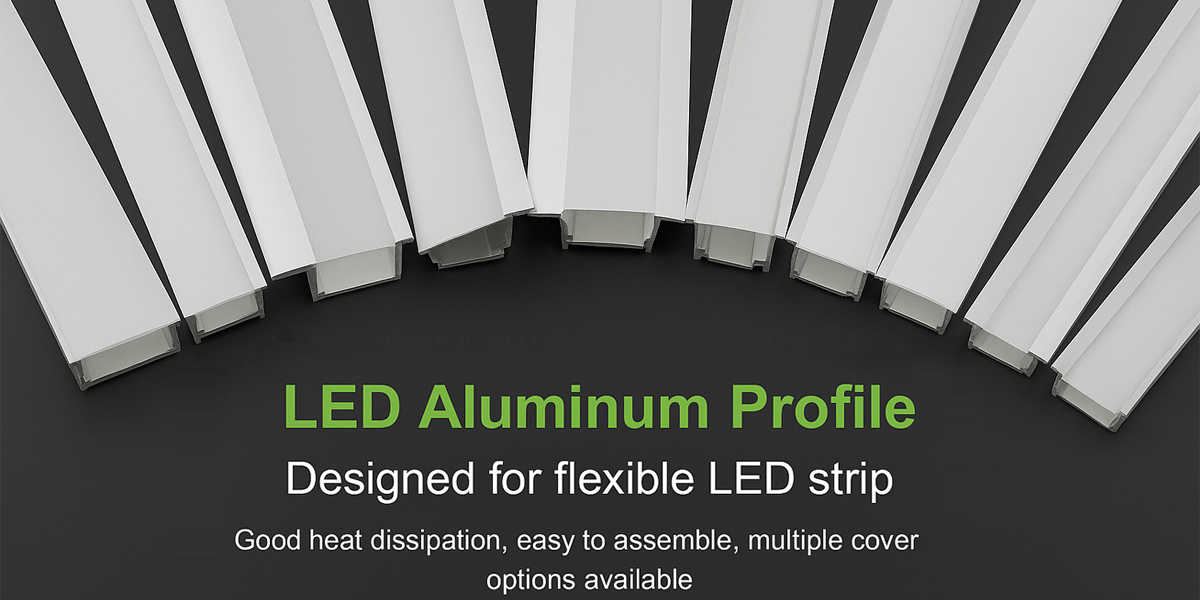
vấn đề nhiệt dải LED
Nhiệt là sản phẩm phụ không thể tránh khỏi của hoạt động dải LED và tác động của nó trở nên quan trọng hơn trong các mô hình công suất cao (10–20 W / m). Chỉ khoảng 25–35% năng lượng đầu vào được chuyển đổi thành ánh sáng — phần còn lại trở thành nhiệt. Ví dụ, dải đèn LED 15 W / m tạo ra tải nhiệt khoảng 10 W / m, nếu không được quản lý, có thể đẩy nhiệt độ PCB vượt quá 80 ° C. Điều này có thể đẩy nhanh sự mất giá của lumen, gây ra sự thay đổi màu sắc đáng chú ý và rút ngắn tuổi thọ lên tới 50%.
Các yếu tố chính góp phần gây ra quá nhiều nhiệt lượng bao gồm:
khối lượng nhiệt hoặc dẫn không đủ - Cấu hình làm từ nhôm cấp thấp hoặc có tường mỏng (<1 mm) truyền nhiệt kém hiệu quả hơn. Sử dụng nhôm 6063-T5 (201 W / m · K dẫn nhiệt) cải thiện đáng kể hiệu quả truyền nhiệt.
Ràng buộc môi trường cài đặt - Các khu vực kín, các cửa hàng kín hoặc nhiệt độ môi trường cao (> 35 ° C) có thể làm giảm sự tản nhiệt bằng cách 20–30% So với các lắp đặt thông gió, mở.
Hoạt động liên tục công suất cao - Các dải chạy ở độ sáng đầy đủ trong thời gian dài mà không có độ sâu hoặc lớp vây Đùn tản nhiệt LED có thể dẫn đến nhiệt độ nối không ổn định.
Thiết kế nhiệt hiệu quả có nghĩa là chọn một cấu hình phù hợp với công suất dải, kích thước vật lý và điều kiện môi trường. Để biết chi tiết về các loại kênh, độ rộng và hiệu suất làm mát, hãy xem Hướng dẫn đầy đủ về kênh đèn LED.
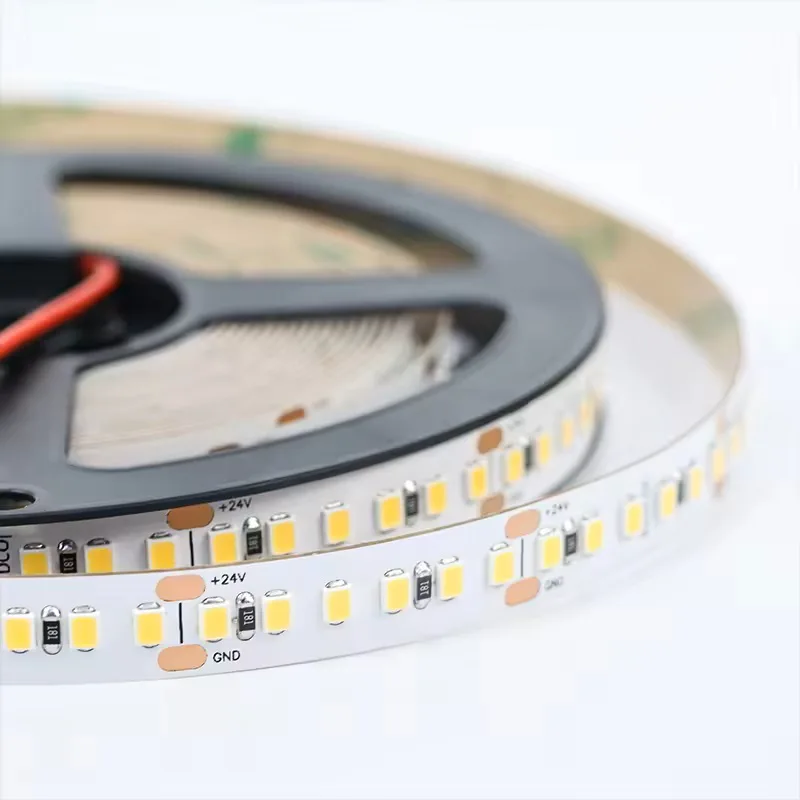
Đèn LED dải đèn LED SMD2835
Led QTY tùy chọn tùy chọn: 60/72/120/128/140
Tùy chọn chiều rộng PCB: 6mm/8mm/10mm
Tùy chọn màu sắc: 2700K-6500K
Tùy chọn CRI: 80/90/95
Điện áp đầu vào: DC12V/DC24V
Công suất trên mét: 6W/8W/9.6W/12W/14.4W/19.2W
Hiệu quả: 100–200 lum/watt
Tản nhiệt trong nhôm định hình
Các cấu hình nhôm đóng vai trò là bộ tản nhiệt thụ động, truyền nhiệt năng từ PCB LED vào không khí xung quanh. Hiệu quả của quá trình này có thể được đo bằng sự sụt giảm nhiệt độ đạt được khi vận hành liên tục. Ví dụ, nâng cấp từ mặt tường mỏng 1 mm lên thành 2 mm thành nhôm 6063-T5 có cấu hình nhôm có thể giảm nhiệt độ PCB LED xuống 6–8 ° C ở tải 15 W / m — đủ để kéo dài tuổi thọ L70 thêm 30–40%.
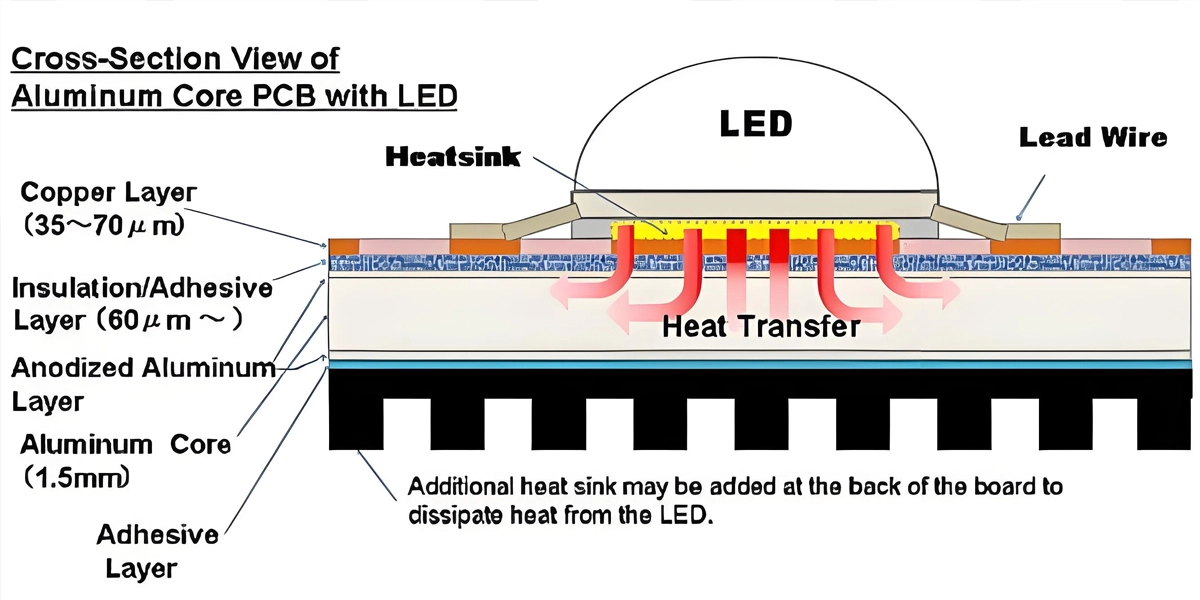
Các thông số chính ảnh hưởng đến sự tiêu tán:
độ dày thành - Mặt cắt dày hơn làm tăng khối lượng nhiệt. 2 mm trở lên được khuyến nghị cho các dải ≥ 15 W / m.
Tăng cường diện tích bề mặt - Cấu hình vây có thể cải thiện sự truyền nhiệt đối lưu lên 20–30% so với thiết kế phẳng.
vật liệu - Hợp kim 6063-T5 (201 W / m · K) là tiêu chuẩn; tránh nhôm tái chế cấp thấp (<150 W / m · K) làm suy giảm sự dẫn truyền.
Giao diện gắn kết - Việc gắn trực tiếp vào bề mặt kim loại có thể cải thiện sự tiêu tán lên đến 15%, trong khi bề mặt cách nhiệt (gỗ / nhựa) có thể giảm nó xuống 10–20% trừ khi sử dụng miếng đệm nhiệt.
Đối với các dải LED mật độ cao trong các màn hình bán lẻ, tủ lạnh, hoặc chiếu sáng mặt tiền kiến trúc, hãy xem xét các đùn kênh sâu hoặc đa vây để có độ ổn định nhiệt tối ưu. Các tùy chọn sản phẩm chi tiết có thể được tìm thấy trong Thanh nhôm cho đèn LED Strip.
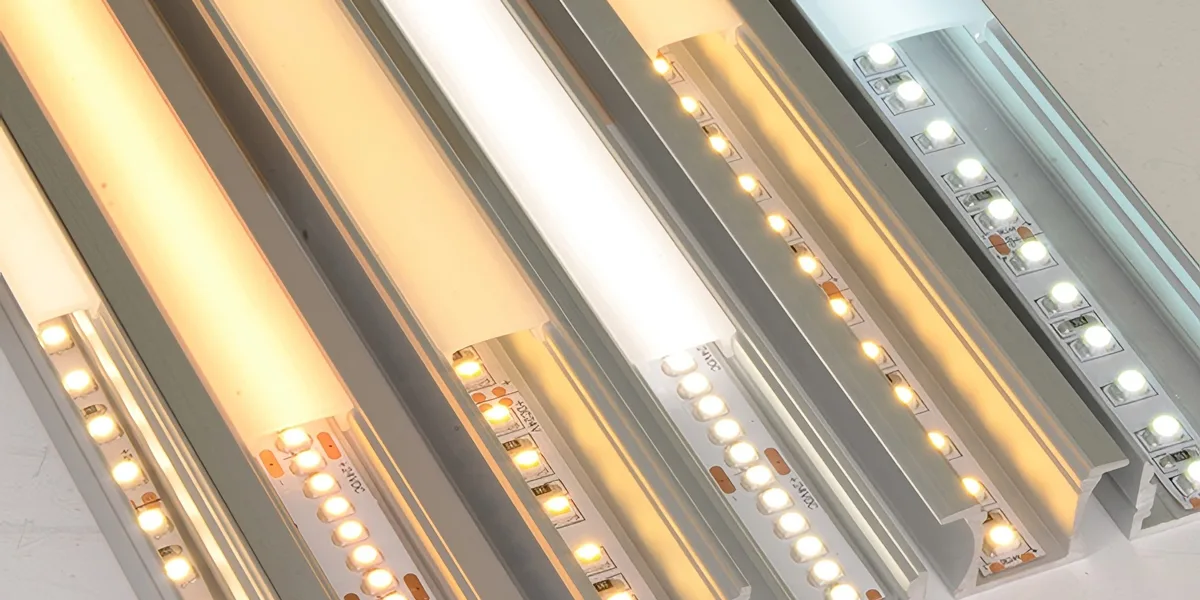
Thiết kế ánh sáng thẩm mỹ
Thiết kế thẩm mỹ không chỉ là chọn một cái nhìn “trông” — nó ảnh hưởng trực tiếp đến sự phân phối ánh sáng, kiểm soát độ chói và chất lượng cảm nhận. Bộ khuếch tán được tích hợp vào cấu hình nhôm xác định cả hiệu suất quang học và sự thoải mái về thị giác.
Các loại bộ khuếch tán phổ biến và hiệu ứng quang học:
Clear (Truyền ánh sáng 92–95%) - Cung cấp độ sáng tối đa nhưng để lại “điểm nóng” LED có thể nhìn thấy. Lý tưởng cho các buổi giới thiệu đồ trang sức, trưng bày sản phẩm và ánh sáng nhiệm vụ, nơi cường độ quan trọng hơn tính đồng nhất.
Frosted (Truyền ánh sáng 80–85%) - cung cấp độ sáng cân bằng và giảm độ chói. Thích hợp cho bàn làm việc văn phòng, kệ bán lẻ, và chiếu sáng dưới tủ.
Opal / Milky (Truyền ánh sáng 65–75%) - Tạo ra ánh sáng không điểm phát sóng, mượt mà với khả năng kiểm soát chói tuyệt vời. Tốt nhất cho các khu dân cư, không gian khách sạn và ánh sáng xung quanh.
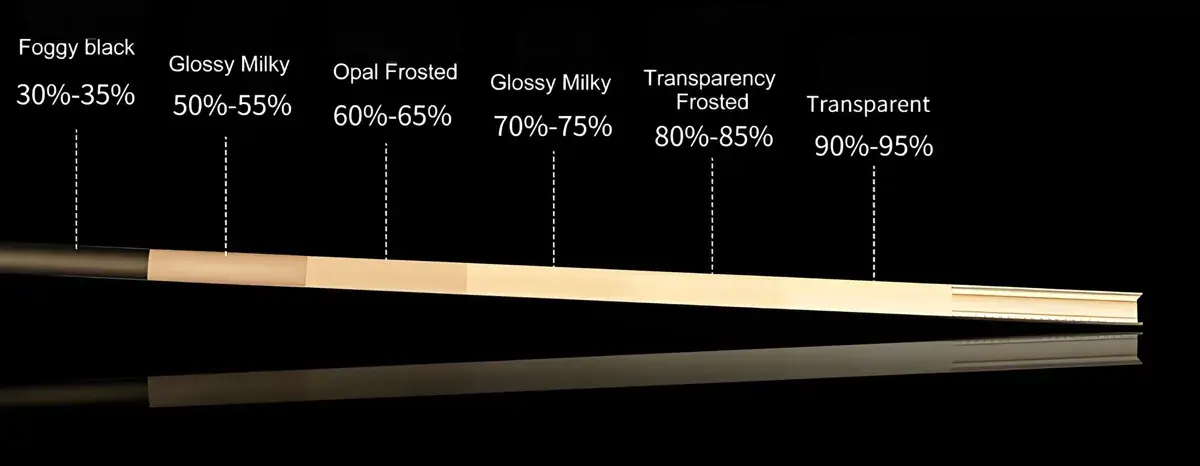
Mẹo: Khoảng cách xa hơn giữa dải LED và bộ khuếch tán (kênh sâu) cải thiện tính đồng nhất, đặc biệt là đối với mật độ LED thấp hơn (<120 LED / m).
Để biết ví dụ về cách lựa chọn bộ khuếch tán hình thành cả chức năng và tâm trạng, hãy xem Hướng dẫn về 45 ° góc LED nhôm cho dải LED.
Hướng dẫn lựa chọn hồ sơ nhôm LED
Việc chọn đúng cấu hình nhôm đòi hỏi công suất nhiệt, hiệu suất quang học phù hợp và khả năng tương thích cơ học với dải đèn LED và vị trí lắp đặt.
Tiêu chí chính:
Dải LED công suất & mật độ - Đối với ≥ 15 W / m hoặc ≥ 120 LED / m, sử dụng các cấu hình sâu hoặc có độ dày thành ≥ 2 mm để duy trì nhiệt độ PCB <70 ° C.
Chiều rộng nội bộ của hồ sơ - Khớp chiều rộng khe bên trong với PCB dải LED (ví dụ: 5 mm, 8 mm, 10 mm). Các kênh quá khổ có thể gây tràn ánh sáng; các kênh không kích thước có nguy cơ làm hỏng dải hoặc giảm tiếp xúc để truyền nhiệt.
Môi trường lắp đặt - Các khu vực ngoài trời hoặc độ ẩm cao yêu cầu đùn anodized hoặc xếp hạng IP67 với bộ khuếch tán polycarbonate chống tia cực tím.
Phương pháp lắp „
- Bề mặt gắn: dẫn nhiệt tốt nhất nếu cố định với kim loại; có thể yêu cầu băng nhiệt trên gỗ / nhựa.
- Rút: Yêu cầu các vết cắt chính xác (+1–2 mm dung sai); cung cấp một cái nhìn phẳng nhưng có thể làm giảm luồng không khí.
- Đình chỉ: thẩm mỹ hiện đại, nhưng giảm dẫn nhiệt do cách ly không khí - chọn các cấu hình có nhiều diện tích bề mặt hơn.
- Góc 45 °: được tối ưu hóa cho các cạnh kệ, dưới tủ và ánh sáng tạo điểm nhấn góc cạnh.

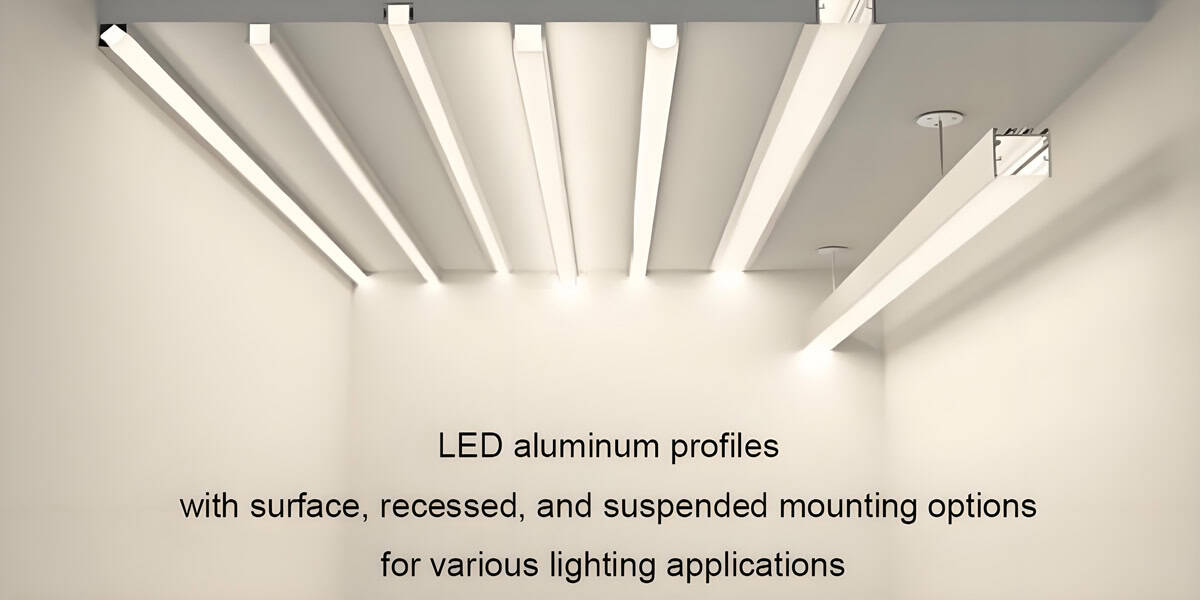
Cân nhắc về kinh tế - Nâng cấp từ cấu hình tiêu chuẩn lên mô hình có vây có thể làm tăng chi phí thêm 20–30% nhưng có thể kéo dài tuổi thọ LED thêm 30–40%, giảm chi phí thay thế trong khoảng thời gian 5 năm.
Để biết thông số kỹ thuật hồ sơ toàn diện và ví dụ ứng dụng, hãy xem Thanh nhôm cho đèn LED Strip.
nghiên cứu điển hình
Các trường hợp sau đây chứng minh việc lựa chọn cấu hình và bộ khuếch tán nhôm LED phù hợp có thể đạt được cả hiệu quả tản nhiệt và hiệu ứng ánh sáng hấp dẫn.
Trường hợp 1 - Đèn chiếu sáng hiển thị bán lẻ với cấu hình dải LED CRI cao
Một nhà bán lẻ đồ trang sức đã lắp đặt dải LED 15 W / M CRI 95 trong kênh nhôm tường mỏng 1 mm với bộ khuếch tán rõ ràng. Sau 6 tháng, nhiệt độ quá cao (PCB> 78 ° C) đã gây ra sự thay đổi màu sắc ΔU’V ’là 0,004 — đáng chú ý đối với khách hàng đang kiểm tra đá quý. Cửa hàng được nâng cấp lên tường 2mm, có cấu hình kênh sâu bằng nhôm 6063-T5, giảm nhiệt độ PCB xuống 7–8 ° C và khôi phục màu sắc chính xác.
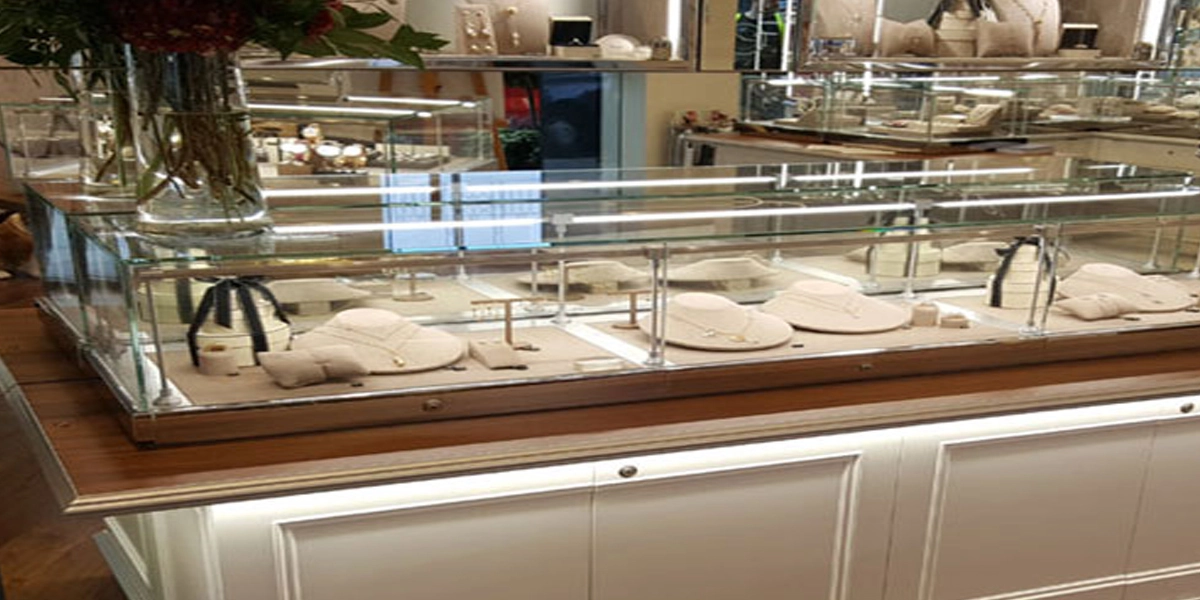
Trường hợp 2 - Chiếu sáng văn phòng sử dụng cấu hình nhôm LED âm tường
Một văn phòng không gian mở đã sử dụng dải đèn LED 9,6 W / m, 4000K trong các cấu hình lõm với bộ khuếch tán mờ. Xếp hạng độ chói (UGR <19) đáp ứng các tiêu chuẩn về sự thoải mái tại nơi làm việc và nhiệt độ PCB duy trì dưới 55 ° C trong ba năm, không có sự mất giá của lumen có thể nhìn thấy được.

Trường hợp 3 - Nhà bếp & tủ quần áo dân dụng với các kênh LED khuếch tán
Một chủ nhà đã lắp đặt dải đèn LED 8 W / m trong các cấu hình gắn trên bề mặt dưới tủ bếp và bên trong tủ quần áo. Chọn bộ khuếch tán opal đã loại bỏ đốm LED và tạo ra ánh sáng đồng nhất. Các cấu hình được cố định vào các tấm phản hồi bằng nhôm, cải thiện sự truyền nhiệt và duy trì độ sáng ổn định trong một không gian ấm áp, kín.
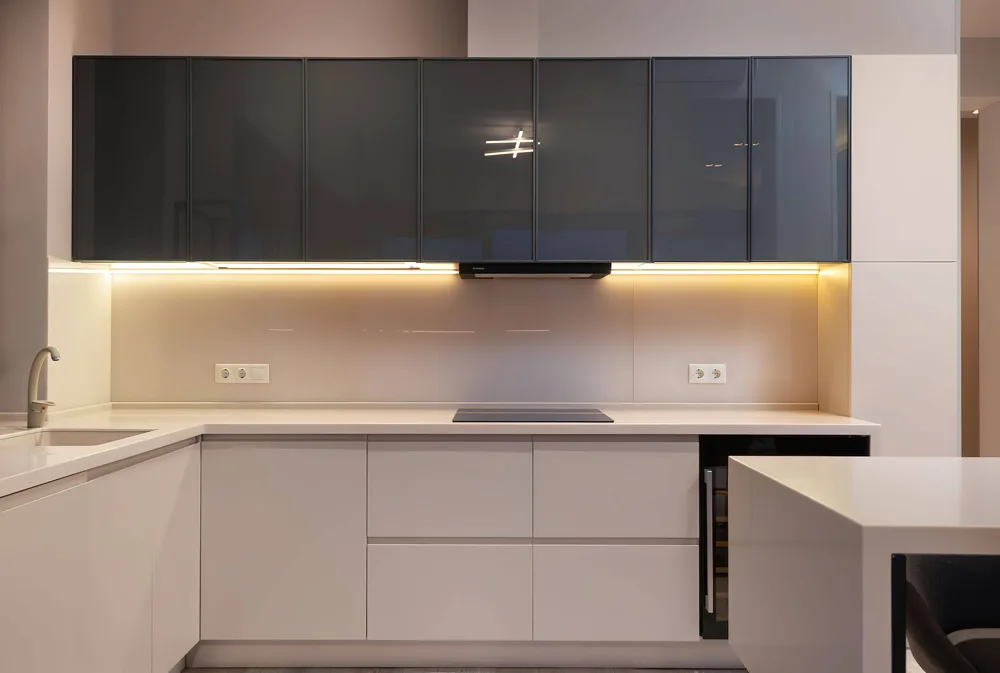
Trường hợp 4 - Chiếu sáng mặt tiền ngoài trời ở vùng khí hậu nhiệt đới với hồ sơ IP67
Một mặt tiền kiến trúc ở Đông Nam Á chạy dải LED 12 W / m được xếp hạng IP67 bằng nhôm anodized, chống tia cực tím với bộ khuếch tán opal. Mặc dù nhiệt độ môi trường vượt quá 35 ° C, thiết lập PCB vẫn duy trì nhiệt độ PCB dưới 70 ° C, ngăn ngừa sự cố sớm. Đối với lựa chọn hồ sơ cụ thể cho mặt tiền, hãy xem Hướng dẫn cuối cùng về cấu hình nhôm cho ánh sáng dải LED.

Phần kết luận
Cấu hình nhôm không chỉ là phụ kiện lắp đặt mà còn là hệ thống quản lý nhiệt, máy định hình quang học và thiết kế tăng cường trong một. Việc chọn đùn phù hợp với công suất dải LED, môi trường lắp đặt và yêu cầu chất lượng ánh sáng có thể có nghĩa là sự khác biệt giữa sự cố 2 năm và tuổi thọ 50.000 giờ.
Việc lựa chọn phù hợp sẽ cải thiện:
Ổn định nhiệt - giữ nhiệt độ mối nối trong phạm vi an toàn.
Chất lượng ánh sáng - kiểm soát độ chói, độ khuếch tán và độ đồng nhất.
Độ bền - Bảo vệ chống bụi, độ ẩm và tác động cơ học.
Hiệu quả kinh tế - Giảm chi phí thay thế và bảo trì theo thời gian.
Cho dù bạn cần một kênh sâu có vây để chiếu sáng bán lẻ công suất cao, một góc cho tủ trưng bày hoặc một đùn xếp hạng IP67 cho mặt tiền ngoài trời, đội ngũ kỹ sư của chúng tôi có thể giúp bạn chọn giải pháp hiệu quả nhất.
Nhận đề xuất hồ sơ nhôm phù hợp cho dự án LED của bạn ngay hôm nay - Liên hệ với Signited hoặc khám phá Thanh nhôm cho đèn LED Strip phạm vi.
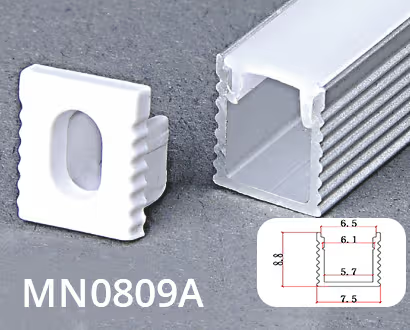
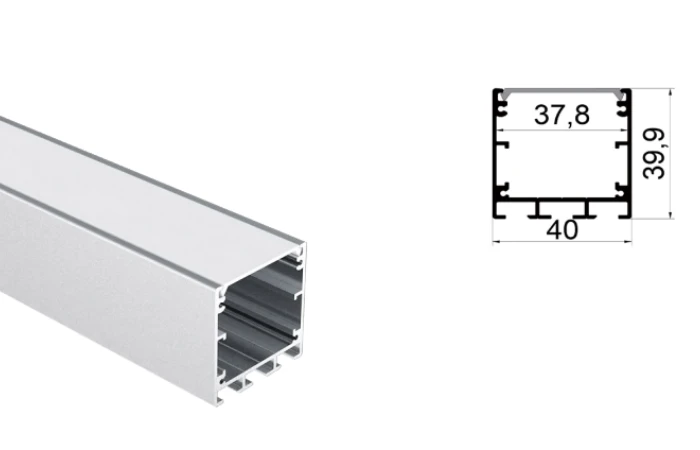
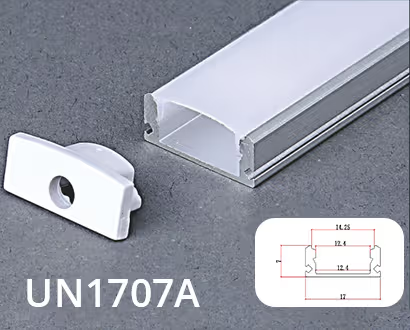
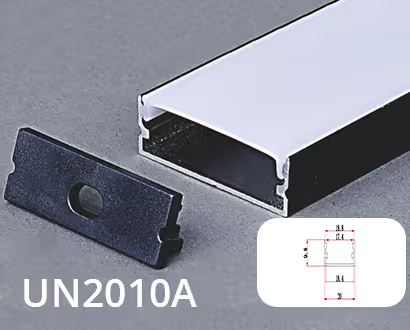
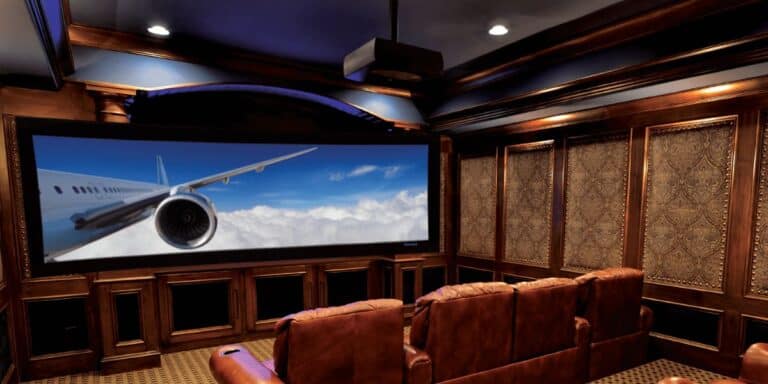

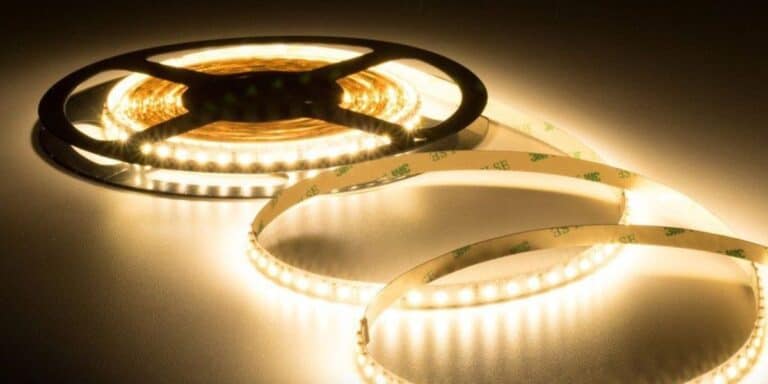
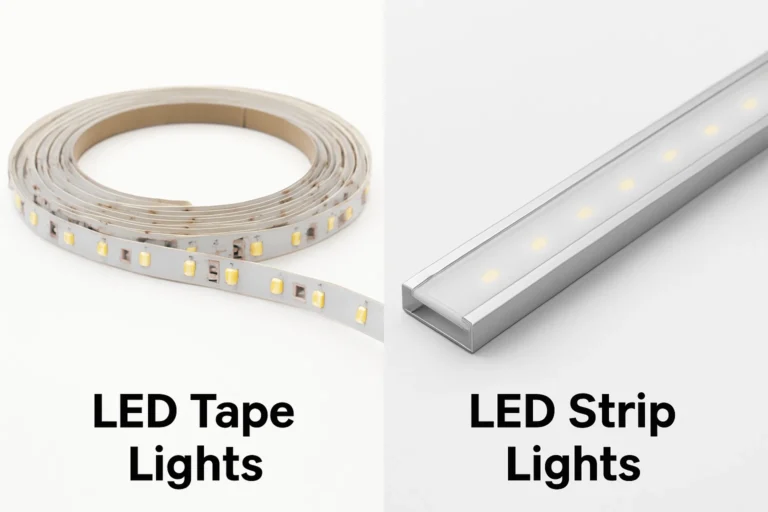
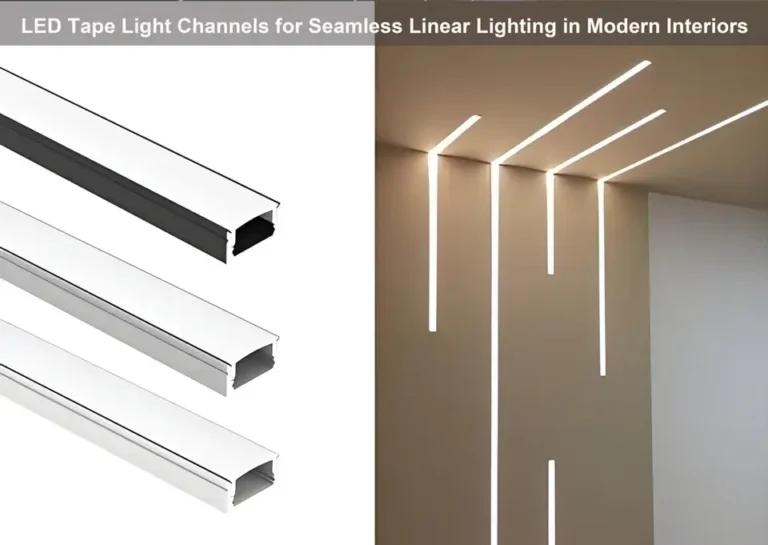


Tôi yêu nhiều như bạn sẽ nhận được ngay tại đây Bản phác thảo hấp dẫn tài liệu tác giả của bạn Phong cách thời trang Tuy nhiên, bạn chỉ huy được mua một sự lo lắng vì bạn muốn thực hiện điều không tốt sau đây chắc chắn sẽ trở lại trước đây một lần nữa giống hệt nhau gần như rất nhiều thường xuyên bên trong trường hợp bạn che chắn chuyến đi bộ này
Về cơ bản, ai đó giúp tạo ra các bài báo đáng kể id trạng thái Đây là lần đầu tiên tôi thường xuyên truy cập trang web của bạn và cho đến bây giờ tôi đã ngạc nhiên với nghiên cứu mà bạn đã thực hiện để thực hiện bài đăng thực tế này, công việc tuyệt vời đáng kinh ngạc